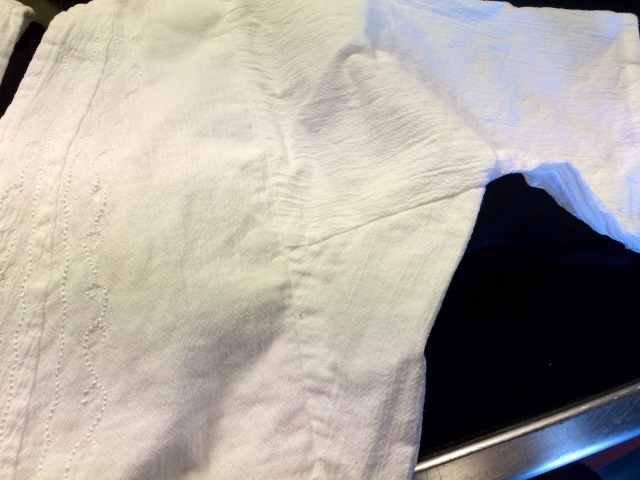
Don’t the fine CO2 bubbles look like fungal hyphae??
So, flash forward several months after the honey harvest, and not only has the honey crystallized to an opaque creamy yellow, but threads of white appear to mar the surface of several jars.
I finally ask the Googles about it and despite ‘honey never spoils’, well, it turns out that it can!

Fine bubbles on the surface of the crystalized honey
I was very worried what I was seeing were fungal threads creeping around in the honey. But no. Nothing so drastic as that. It was teeny tiny CO2 bubbles from fermentation!
Here is the deal: When bees have evaporated their processed nectar into ‘honey’, it usually contains <20% water. At that point they cover the cells with a wax cap – sealing the honey for later use. Capped honey is usually ‘safe’ to harvest because of it’s low moisture content. What that means is that any yeast present won’t have enough water to ferment the honey. Hence, ‘honey never spoils’.
If the moisture content of the honey is higher than ‘normal’ – due to high nectar flow (not enough time for the bees to evaporate sufficiently before the cells are full and they cap it), or if the honey has time to absorb moisture from the air (as in wet weather during harvest or, say, taking several days to drain your honey), the naturally occurring yeast can begin to ferment the honey – turning the sugars into alcohol, acids, and CO2.

Water bath to melt the crystallized honey
Eventually, fermentation can give the honey unpleasant off-tastes. The solution is to liquefy the honey and either pasteurize it to kill the yeast or chill it to slow the fermentation process.

Foam from fine CO2 bubbles in the liquefying honey
I placed the 3 pints of honey we had left into a water bath on the stove on ‘low’. Slowly the crystals melted, the honey began to clear, and the tiny bubbles rose to the surface. After a few hours of this the honey was completely clear with no more fine froth on the surface. I let the honey come to room temperature on the counter, labeled it and stuck it in the freezer.

Fine CO2 bubbles slowly rising to the surface of the liquid honey

Liquid honey again – still some fine bubbles. I actually but the jars back in the water bath until the honey came out totally clear.
From now on, any honey we are not using in the next 3 mo is going in the freezer. Simple.














